#1920s fashion llustrations
Photo
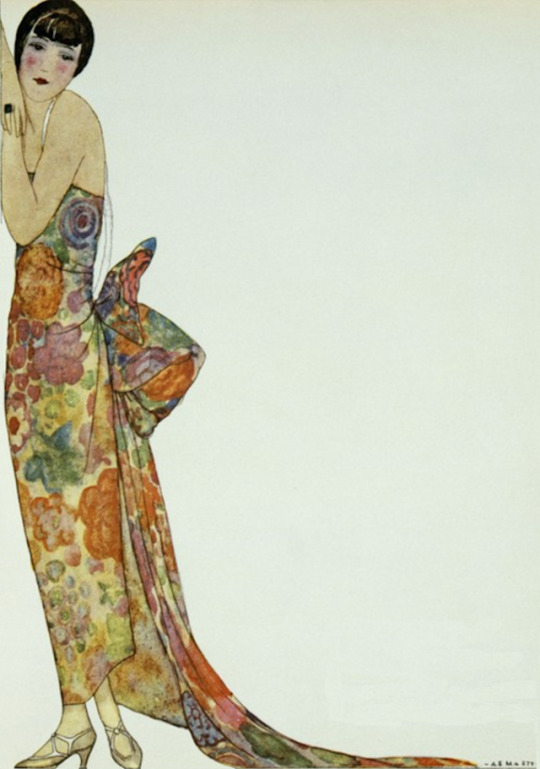
André Édouard Marty (A. É. Marty), Le Pouf, Robe du Soir by Paul Poiret, La Gazette du Bon Ton, 1924.
#andré Édouard marty#a. É. marty#1924#paul poiret#gazette du bon ton#le pouf#robe du soir#poiret#andre edouard marty#a. e. marty#1920s#1920s fashion#20s fashion#illustration#1920s illustration#1920s illustratons#20s illustration#20s illustrations#1920s fashion llustrations#20s fashion illustrations#20s dresses#1920s dresses#1920s evening dresses#1920s evening dress#evening dress#dress#jazz age#twenties#roaring twenties#la gazette du bon ton
177 notes
·
View notes
Text
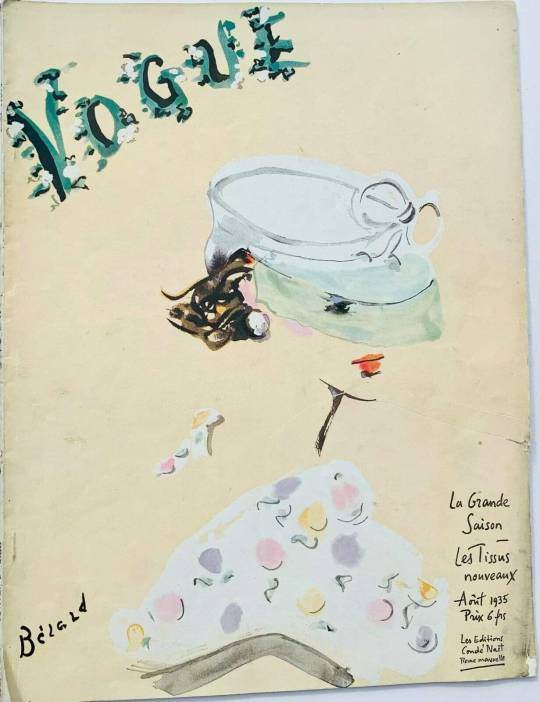




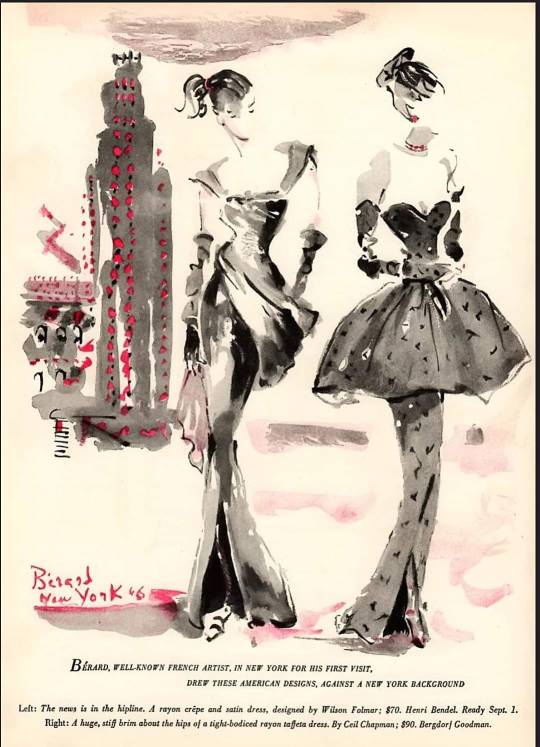

D'Artagnan.
" The work of French artist and illustrator Christian Bérard (1902-1949 )
Bérard may not be a familiar name but his work was highly regarded both in the fashion world and the theatre from the 1920s to his death in 1949.
He worked for Vogue magazine, Schiaparelli ,Nina Ricci and Chanel.His loose calligraphic style along with that of his contemporaries ; Vogue illustrators Eric (Carl Erickson) Marcel Vertes and Rene Bouet-Willaumez show a marked change in the style of fashion illustration in the 1930s and 40s which continued into the 1950s
#1 Vogue cover 1935 illustration by Christian Bérard.This magazine is currently on Ebay for £135.00
#2 1940 Schiaparelli evening gown illustrated by Christian Bérard
#3 Vogue 1937 illustration by Christian Bérard.
#4 Vogue June 1939 illustration by Christian Bérard.
#5 New York Illustration 1946 Christian Bérard
#6 New York llustration 1946 Christian Bérard
#7 Illustration Christian Bérard 1947 Le Bal du Panache Feathers and Hat
#8 Christian Bérard illustration of Christian Dior's famous iconic New Look "Bar" ensemble 1947 French Vogue (not shown)
~~~ooo~~~
Christian Bérard ( 1902 – 1949), also known as Bebè, was a French artist, fashion illustrator and designer.
Bérard and his partner Boris Kochno, who worked for the Ballets Russes as well as being co-founder of the Ballets des Champs-Elysées; were one of the most prominent openly homosexual couples in French theatre during the 1930s and 1940s.
Born in Paris in 1902. In 1920, Bérard entered the Academie Ranson where his style was influenced by Édouard Vuillard and Maurice Denis.
In 1925 Bérard showed his first exhibition at the Gallery Pierre. From the start of his career he had an interest in theatrical scenery and costume designs, and played an important role in the development of theatrical design in the 1930s and 1940s. In the early 1930s Bérard worked with Jean-Michel Frank, painting screens, wood-work and drawing projects for carpets. Bérard's most renowned achievement was probably his lustrous, magical designs for Jean Cocteau's film La Belle et la Bête (1946).
Bérard died suddenly from a heart attack on 11 February 1949, on the stage of the Théâtre Marigny.
Francis Poulenc's Stabat Mater (1950) was composed in his memory, and Jean Cocteau dedicated his film Orphée (1950) to him.
Love D'Artagnan xxx".
12 notes
·
View notes
Photo



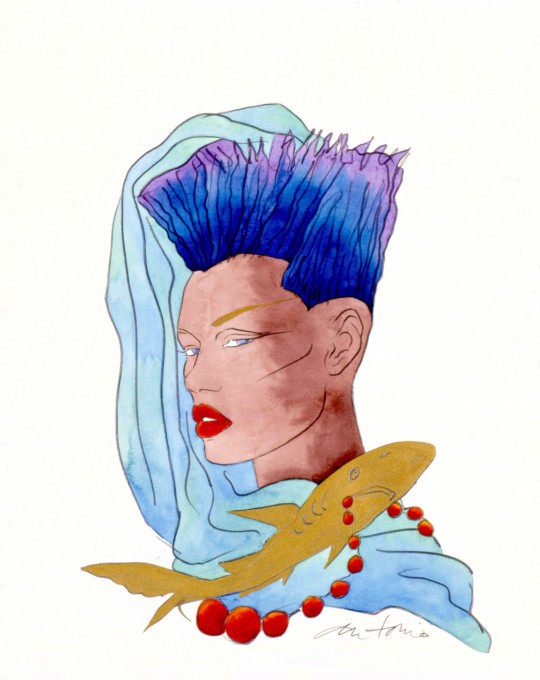
From left to right top to bottom; Antonio Lopez, Maxime de la Falaise, NYC, 1967, Antonio Lopez, Carol Labrie, NYC, 1969, Lopez, Hemphill and Ramos, 1982, Antonio Lopez, Grace Jones, 1982.
Research point: Fashion Illustration
“Historically, imagery that promoted the fashions of the day, most notably from the early 20th century to the 1950s, was dominated by illustration. However, the discipline lost ground to photography and it was not until the 1990s that illustrators have returned to this domain.” (Alan Male 2007)
I believe there is truth in the above quote as you can see the changes between the first part of the 20th century in comparison to the start of the 21st. Much like reportage illustration early 20th century fashion illustration is focused on conveying information. Images are precise and clean conveying an aspirational aesthetic. Clothing looks expensive, glamorous and the artist captures the look, feel and weight of the fabric. ‘[…] you must feel the fabric in your mind otherwise you won’t convey it’s character in your drawing’ (Marshall,1948).
In her essay for Illustration History Sarah Goethe-Jones describes fashion illustration as “the unique ability to use pen or brush in such a way that it not only captures nuance through gesture but is also able to transform the graphic representation of a garment, accessory, or cosmetic into an object of desire. The job of the fashion artist is to ‘tell the story of the dress.’” (Goethe-Jones, 2019) I believe this statement applies to the industry both past and present however the stories that the dresses tell have changed.
In the below illustrations from 1913 - the 50′s. The woman are stylised in a manner that has remained consistent within the fashion industry in that they are very thin, tall with a pronounced narrow waist. The models feel quite static and actively posing rather than later illustrations which try to capture fabric in movement. These images are telling a story of being beautiful, glamourous. These women look as though they are heading to an event, she is a socialite, part of the elite. Photos weren’t widely published at the time so there was a necessity for illustration in order to sell clothes.


From left to right top to bottom, Vintage pattern sourced (Voguepatterns.mccall.com, 2020) René Gruau, Dior 1947. Vintage pattern sourced (Voguepatterns.mccall.com, 2020) Vintage pattern sourced (Voguepatterns.mccall.com, 2020) Fitzwater, Fanny Fern, circa 1920. Mourgue, Pierre, 1946. Alberto-Fabio Lorenzi,1913. St Cyr, Va,1915.
Post 1950′s there was a decline in fashion illustrations produced as magazines editors found the public responded more to photography. This is not to say work was not being produced. In Masters of Fashion Illustration David Downton explains ‘In, response, fashion illustrators adopted a new graphic dynaisim as the challenge became to do what photography can’t’ (Downton 2012). This can be seen in many illustrations from the late part of the century. Use of line and colour notably become more experimental working hard to capture the movement of clothing. For me the work of Antonio Lopez is an example of this. Despite the general decline in the industry he was one of the few who were able to capture the imagination of the fashion publications with his bold stylised drawings.
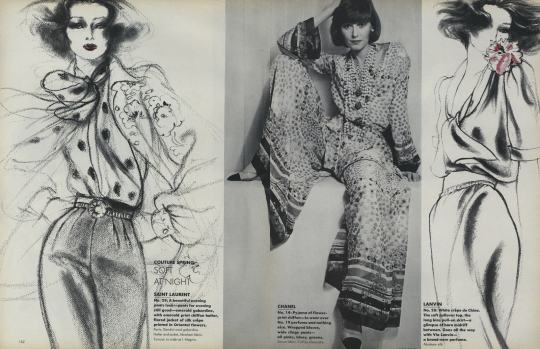
Photographed by David Bailey and illustrated by Antonio Lopez, Vogue, March 1973 Antonio Lopez in Vogue “Couture Spring: Soft at Night”.
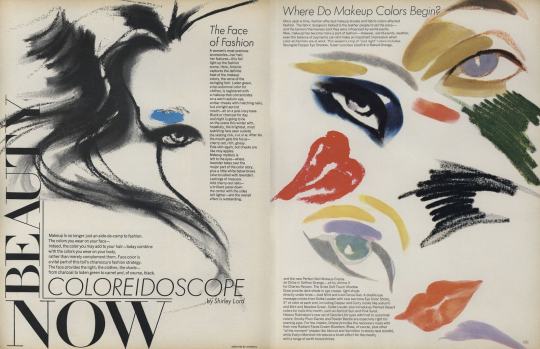
llustrated by Antonio Lopez, Vogue, August 1973 Antonio Lopez in Vogue “Beauty Now: Coloreidoscope”

Illustrated by Antonio Lopez, Vogue, November 1984Antonio Lopez in Vogue “True Wit: Norma Kamali”
References
Borrelli-Persson, L. (2018). Before There Were Influencers, There Was Antonio, Illustrator Extraordinaire and Arbiter of Style. [online] Vogue. Available at: https://www.vogue.com/article/antonio-lopez-1970s-sex-fashion-disco-documentary-by-james-crump [Accessed 1 Feb. 2020].
Collections.vam.ac.uk. (2020). Search the Collections | Victoria and Albert Museum. [online] Available at: https://collections.vam.ac.uk [Accessed 1 Feb. 2020].
Downton, D. (2012). Masters of fashion illustration. London: Laurence King.
Goethe-Jones, S. (2019). Fashion Illustration from the 16th Century to Now - Illustration History. [online] Illustrationhistory.org. Available at: https://www.illustrationhistory.org/essays/fashion-illustration-from-the-16th-century-to-now [Accessed 1 Feb. 2020].
Hernandez, J. (2016). Antonio Lopez, the Legendary Nuyorican Illustrator Who Changed the Fashion Industry Forever. [online] Remezcla. Available at: https://remezcla.com/features/culture/antonio-lopez-fashion-illustrator/ [Accessed 1 Feb. 2020].
Lopez, A., Hemphill, C. and Ramos, J. (1982). Antonio's girls. London: Thames and Hudson.
MARSHALL, F. (1948). Fashion Drawing. (Third edition.). Studio Publications: London & New York.
Thong, H. (2017). Leo Greenfield - Fashion Illustrator | MAKERS WHO INSPIRE. [video] Available at: https://youtu.be/Qs8ixWAgRiQ [Accessed 1 Feb. 2020].
Vam.ac.uk. (n.d.). Fashion Drawing and Illustration in the 20th Century - Victoria and Albert Museum. [online] Available at: http://www.vam.ac.uk/content/articles/f/fashion-drawing-in-the-20th-century/ [Accessed 1 Feb. 2020].
Voguepatterns.mccall.com. (2020). Vogue Patterns. [online] Available at: https://voguepatterns.mccall.com [Accessed 1 Feb. 2020].
0 notes
Text
Ok guys, we need to talk about J.C.Leyedecker, and how its a fucking travesty that no one has made a film about him yet.
So Leyendecker was a German immigrant who lived and worked as an illustrator during the 1910′s-1940′s, and reached his true peak in the 1920s. His use of glowing light and strong line to almost carve his images into the page is honestly some of the most stunning and beautiful work you’ll ever see, and his work was highly ubiquitous at the time. In fact his llustrations for the Arrow shirt company created one of the most iconic images of male beauty of the early 20th century. But this icon came with a delicously romantic twist.

So this image of The Arrow Man was both incredibly macho and well built, but also ethereally pretty and dapper. The model who the drawing was based on cropped up in A LOT of Leyendeckers work. In many he was engaged in casual social scenes with other men, in others he was shaving in the bathroom or getting dressed, broad shouldered, skin glistening, dark blond hair perfectly in place, jaw sharp as a fucking shovel, but with a slightly rounded chin. In one ad for war bonds he even appeared as the statue of liberty. This same man appeared in hundrereds of drawings, each with the same sharp care and attention to detail.


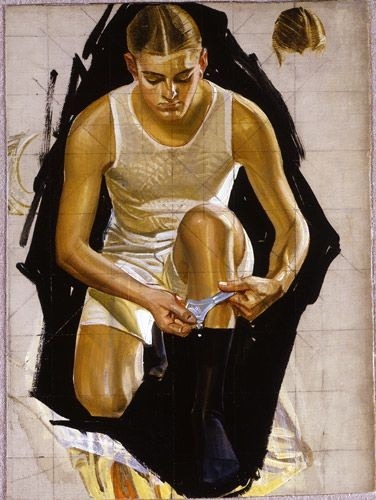
So this mans image is EVERYWHERE during the early 20th century, and he is a fashion/lifestyle icon for men on par with the female gibson girl. He was the celebrated symbol of male strength, virility, and power.
And man who modeled for Leyendecker’s iconic univerally adored macho man? That would be his lover, Charles Beach.
so all this gorgeous homoerotic artwork defined the image of hyper macho masculinity during the interwar period. Leyendecker painted Beach onto the face of the world. He basically immortalised the love of his life by making the whole world adore him as much as he did.
Leyendecker’s work (and parties) would go on to influence the likes of F. Scott Fitzgerald and Norman Rockwell. After his death in 1951, once people decided it was unsavoury to apporiatly venerate a man who was in a 50 year commited relationship with another man into the ‘household name’ status that he deserved, Leyendecker’s name was sadly pushed out of the history books in favour of more ‘wholesome’ characters.
And that fucking sucks
I would like to request a full length movie, with all the jazz era glamour and glitz this genius deserved. During a time when homosexual men where thought of as deviants, this man not only had the nerve to use his lover as the model for all his great works, but he made him into the STANDARD of what it was to be a man.
J.C. Leyendecker and Charles Beach deserve your rememberance.

#j.c. leyendecker#leyendecker#charles beach#art#art history#homosexuality#gay history#gay icons#long post
64K notes
·
View notes